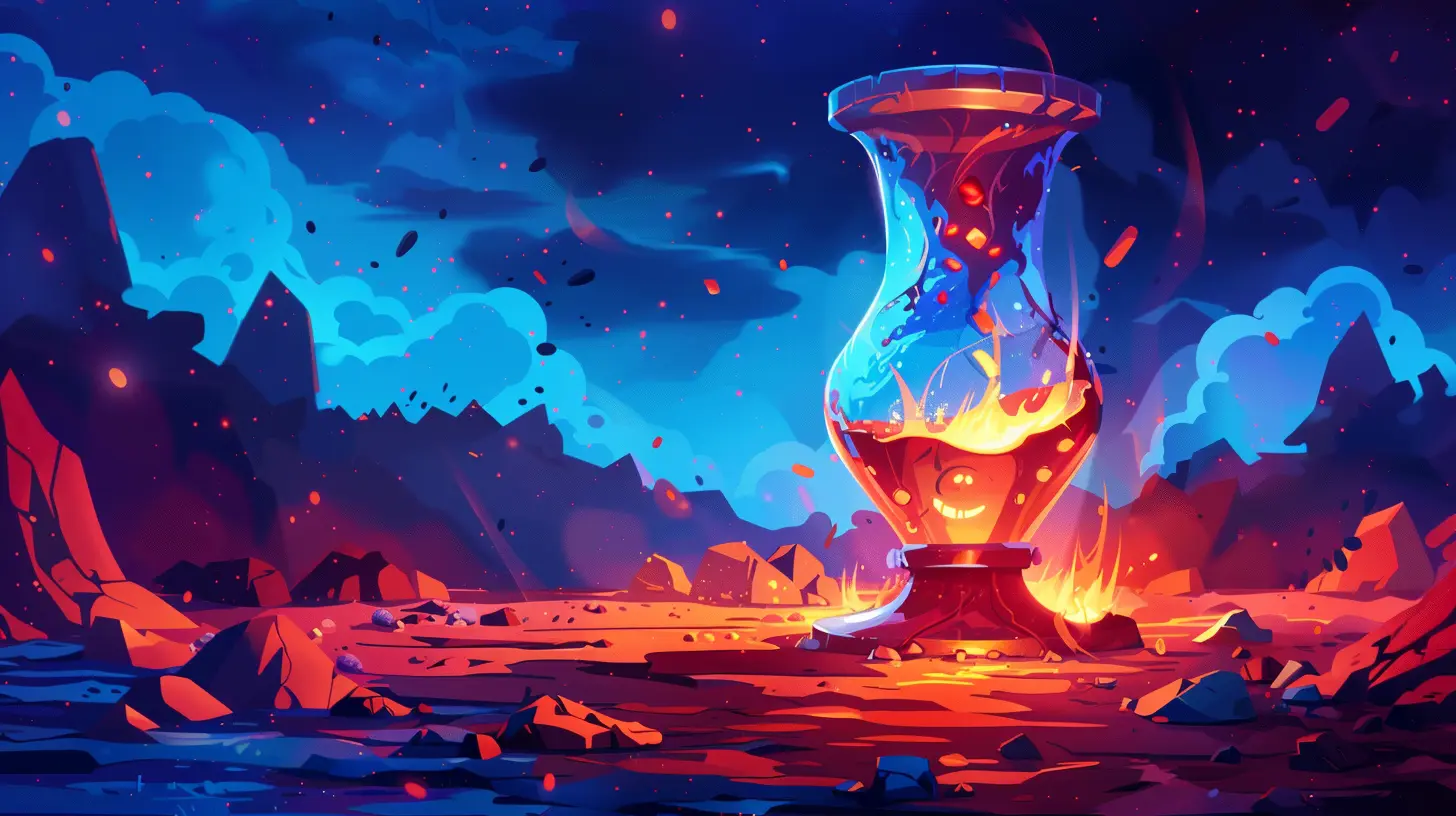Choosing the Perfect Crowdfunding Timeline for Your Game Project
11 June 2025
So, you’ve got a killer game idea. Maybe it’s been keeping you up at night, maybe you've sketched out the mechanics, drawn characters in your notebook, and now you're ready to take the big leap into crowdfunding. But wait—before you hit the launch button on Kickstarter or Indiegogo, there’s this little thing no one talks about enough: your crowdfunding timeline.
Getting your crowdfunding timeline right can be the difference between full funding and flopping. Seriously! It’s not just about picking a random month and hoping people throw money at your project. It's about timing, strategy, and understanding the rhythm of your potential backers.
Let’s break it all down and help you choose the perfect crowdfunding timeline for your game.
Why Timing Matters in Crowdfunding
Picture this: You're launching your game campaign on a Monday morning in August... only to realize half your audience is on vacation or too broke from summer holidays. Or maybe you launch in December, thinking it’s the “giving” season—only to find everyone’s already spent their money on gifts and gadgets.See how timing plays a massive role?
Crowdfunding success isn’t just about an amazing project—it's about when you present it to the world. Think of it like throwing a party. You might have the best food, music, and vibes, but if you throw it at 2 a.m. on a Tuesday, who’s showing up?
Understand the Lifecycle of a Game Project
Before we get too deep into timing specifics, let’s zoom out for a second. Where are you in your game project’s lifecycle?Crowdfunding should never be your first step. You’ll want a playable demo, art assets, a killer pitch video, and a solid understanding of your game’s scope. Backers want to see you’ve put in the work and aren’t just relying on their cash to figure things out.
Here’s a quick look at a typical game project cycle:
1. Concept & Design Phase – You’re brainstorming, writing design docs, maybe doing some concept art.
2. Prototype Phase – You’ve built a rough version or a working demo.
3. Pre-Marketing Phase – Building an audience, getting email signups, being active on social media.
4. Campaign Phase – This includes pre-launch hype, the actual crowdfunding campaign, and post-campaign updates.
5. Development & Fulfillment – Creating the game and delivering the rewards you promised.
So, where does the crowdfunding timeline fit in? Right smack between your prototype and development phases. But it needs its own timeline too—more than just the 30 days your campaign is live.
The Ideal Length of a Crowdfunding Campaign
First things first—how long should the campaign actually run?Most platforms recommend around 30 days. That’s kind of the sweet spot. Any shorter and you risk not reaching people in time. Any longer and momentum might dip, killing your chances of maintaining interest.
So why not 60 days? Simple answer: fatigue. Both on your end and your backers'.
You’ll be doing daily updates, answering questions, fixing bugs in your demo, promoting the heck out of it... doing that for two full months is like trying to sprint a marathon.
Pro Tip: Aim for 30 days, maybe 35 if you’ve got a big pre-launch following. Anything longer than that can dilute urgency and excitement—two things a campaign desperately needs.
The Pre-Launch Phase (2–3 Months Before Launch)
Here’s the thing: your crowdfunding campaign starts way before you hit the “launch” button.1. Build Your Audience
Start building hype at least 2–3 months in advance. This means:- Creating a landing page to collect emails
- Teasing artwork and game features on social media
- Engaging with game dev communities
- Reaching out to influencers and content creators
Remember this golden rule: Launch to an audience, not to the void.
Platforms like Kickstarter track early momentum. If you can drive a strong day-one response, you'll likely get featured, which boosts visibility and signals backers that you're legit.
2. Show Progress & Credibility
By the time you launch, you should have:- A playable slice of the game (even a small vertical slice works)
- Concept art, character animations, or gameplay footage
- Quotes from alpha testers or influencers
People fund people they trust. Show them you’re serious.
Picking the Perfect Month for Your Campaign
Let’s talk calendar strategy. Yep, it’s a thing.Best Months to Launch a Crowdfunding Campaign
- February to Early June: Great months. People are financially recovered from the holidays and not yet caught up in summer plans.- September to Early November: Another solid stretch. School and summer breaks are over, and folks are back in their routines. Plus, the holiday season hasn’t drained their bank accounts yet.
Months to Avoid (If You Can Help It)
- December & January: People are either spending or broke. Also, during the holidays, your marketing efforts can quickly get buried under Santa memes and year-end sales.- July & August: Summer vacation mode. People are spending time outdoors—not refreshing Kickstarter.
Of course, if your audience is global, these rules shift a bit. Always consider where your biggest groups of backers live.
Launch Day & Final Days: The High Points
The first 48 hours and the last 72 hours are critical. That’s when the most funding rolls in.So, line up your promotions, email reminders, influencer shout-outs, and livestreams for these days. Stir up interest and make a splash.
If your goal is met early, use that momentum to aim higher with stretch goals. Backers like being part of a climbing success story—it makes them feel like they’re part of something bigger.
The Mid-Campaign Slump (And How to Wiggle Out of It)
Every campaign experiences it. That weird quiet period between days 10–20 where pledges slow to a crawl, and you start questioning if you’ve done something wrong.You haven’t. It’s normal.
But don’t just sit and wait. Use this time to:
- Release interviews or behind-the-scenes content
- Host a Q&A livestream
- Announce teaser stretch goals
- Offer limited-time rewards to reignite interest
Basically, shake things up. Give your audience a reason to re-share and re-engage.
Post-Campaign Timeline: Set Expectations Early
You got the funding—amazing! But the work doesn’t stop there.Be Transparent About Delivery
Create a realistic timeline for development and delivery. Be honest.If you estimate 12 months but know it’ll likely take 18, say 18. Your backers will appreciate your honesty a lot more than unexpected delays and broken promises.
Stay in Touch
Lack of updates is a big no-no. Even if things are slow, a quick post saying “Hey, still here!” goes a long way in keeping trust alive.Common Mistakes in Choosing a Crowdfunding Timeline
Let’s rapid-fire some pitfalls to avoid:- Launching too soon – Don’t start crowdfunding before you have solid visuals and a playable demo.
- Poor pre-launch planning – If you haven’t built an email list or social following, you’re not ready.
- Ignoring holidays and events – Avoid launching close to major distractions like Black Friday or E3.
- Stretching the campaign too long – Momentum is your friend. Don't let it fizzle out.
- No post-campaign plan – Don’t leave your backers in the dark once the campaign ends.
Wrapping It All Up
Choosing the perfect crowdfunding timeline for your game project isn’t rocket science—but it does take planning, awareness, and a bit of gut instinct.Here’s your quick timeline cheat sheet:
- 📆 3 Months Before: Build your audience, polish your demo, prep your pitch.
- 🎥 2 Months Before: Create marketing materials, schedule press, and start teaser content.
- ✅ Launch Month: Go live, engage hard for those first 48 hours, and keep momentum rolling.
- 🧗 Mid-Campaign: Fight the slump with updates and events.
- 🚀 Final Days: Push hard—this is your moment!
- 🎓 Post-Campaign: Deliver on promises, keep backers updated, and keep building your fanbase.
Remember, your game deserves a great debut. Treat your crowdfunding timeline as the build-up to your game’s big concert—because when the curtain rises, you want every eye watching.
Good luck, game dev. Your audience is waiting.
all images in this post were generated using AI tools
Category:
CrowdfundingAuthor:

Greyson McVeigh
Discussion
rate this article
1 comments
Zane Harper
Ah, yes, the perfect crowdfunding timeline—the magical elixir that guarantees your game will be a smash hit! Because who needs actual game development when you can just time your funding like a pro?
June 21, 2025 at 3:48 PM

Greyson McVeigh
While a well-planned timeline is crucial, it's just one piece of the puzzle. Successful game development requires a solid game concept, dedicated effort, and community engagement alongside funding.


